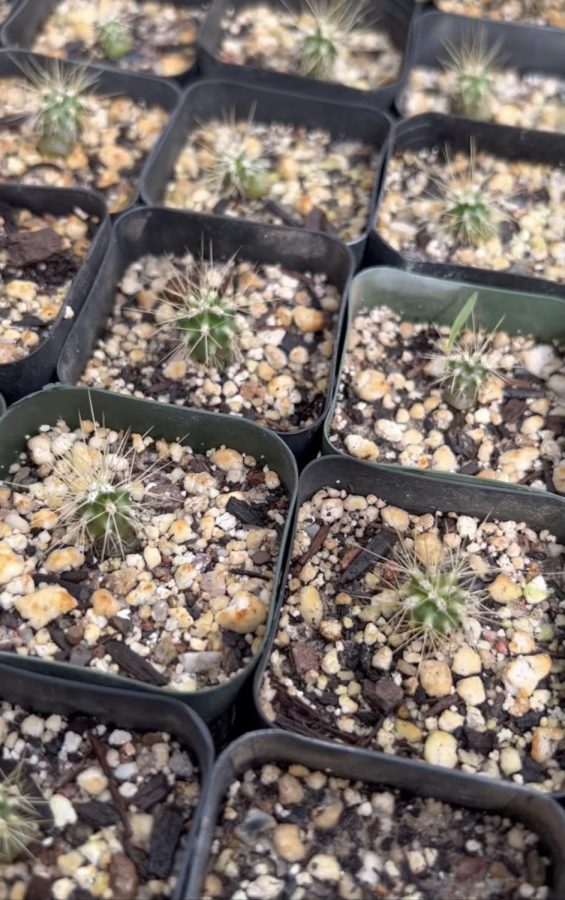As a result of Arizona’s 5th largest fire—the Center for Urban and Native Wildlife is growing more than 200 Saguaros to replace those destroyed
A modest building located on the campus of Scottsdale Community College may look unimpressive—but the work going on inside and out—is making a huge difference.
Small saguaro cacti to replace some of the plants lost in the Bush fire
October 10, 2022
While the Center for Urban and Native Wildlife (CNUW) building is located on the campus of Scottsdale Community College its members oversee a large campus green house, a community garden and even a nature trail.
CNUW members include, Dr. John Wesser, Executive Director; Natalie Case, Education Programs Developer; Scottsdale Community College students and community volunteers.
In the greenhouse, members are growing over 900 native plants as well as 200 Saguaros to replace ones that were destroyed in Arizona’s Bush Fire.
In addition to their restorative efforts, the center also grows plants for their bi-annual plant sale.
“You can’t just go to the store and buy these plants,” said Education Programs Developer, Natalie Case.
The plants being sold are native to Arizona and help support the ecosystem here.
Sustaining the specific ecosystem is one of the many roles of CNUW and students and visitors to the campus of SCC can’t help but notice the indigenous plants along the nature trail that winds from class to class and provides nectar for bees and butterflies, food for birds and tortoises, shelter for birds and reptiles and mammals.
Inside the CNUW building, reptiles, snakes, amphibians and bugs are on display for the community to see.
Valley elementary students attend field trips at the center as well.
“We bring students on campus; we have targeted fourth grade students over the years. Since 2001 we’ve had about 38,000 fourth graders come on campus,” said Executive Director, Dr. John Wesser.
The reason CNUW targets the fourth grade is because their program covers one-third of Arizona’s 4th grade science standards. Additionally, educating and informing the public from a young age is important.
“If you don’t know what’s out there and you don’t know why it’s special, you won’t care if it disappears”, said Case.
CNUW always needs volunteers.
Anyone interested in volunteering can reach out to them at Center for Native and Urban Wildlife | Scottsdale Community College (scottsdalecc.edu)


